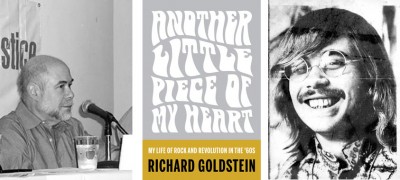Paul Simon and the Birth of Folk Rock
Sunday, November 15th at 1:00 pm
Speaker Richard Goldstein
In the 1960s, several writer/performers changed the structure and style of American pop music. One was the team of Lennon and McCartney—aka The Beatles or simply the Fab Four. The other was Bob Dylan. The Beatles added instrumentation from other cultures and set their songs to sounds from the past and the future, from high and low culture alike. Dylan combined the richly allusive lyrics of blues with the poetics of the French Symbolists and the Beats. The result was the modern rock song: eclectic, exotic, and self-consciously artful. In the shadow of these innovators a number of lyricists were inspired to express the full range of their imaginations. One of the most influential of them was Paul Simon.
Simon is one of the greatest living American songwriters, his best work commensurate with the most ambitious cultural achievements of the past 50 years. In his writing, the commonplace power of metaphysical poetry is combined with the spare insight of rocker Buddy Holly. But in the early ‘60s, Simon was present at the creation of that formative hybrid style known as folk-rock. To understand its origins in the folk movement of that era, and its its fusion with the rhythmic strategies of rock n’ roll, it’s essential to explore Simon’s oeuvre. This lecture will attempt to do just that, focusing on Simon’s earlier career with Art Gurfunkel as the top-40 duo Tom &Jerry, and tracing their development through their breakthrough hit “The Sound of Silence” and the album that followed. We will see how Simon’s sense of pop music, combined with his erudition, played a crucial role in the transition from folk to rock, and thereby formed the basic parameters of 60s music. It’s especially interesting to note that Simon belongs to the tradition of Jewish pop-song artists (e.g. Irving Berlin, the Gershwins, and of course Dylan) who apotheosized and expanded the American musical tradition.
At the ripe age of 22, Richard Goldstein became the first widely-read rock critic. His column in the Village Voice allowed him to get close to many major players in the culture of the ‘60s, from Janis Joplin, Jim Morrison, John Lennon, and Jimi Hendrix, to artists such as Andy Warhol and political radicals such as Abbie Hoffman and the Black Panthers. He is the author of “The Poetry of Rock,” “Reporting the Counterculture,” and the recently published memoir, “Another Little Piece of My Heart: My Life of Rock and Revolution in the ‘60s.” He served for many years as executive editor of the Voice, and his writing on gay rights earned him a GLAAD award as columnist of the year. He has taught at five New York colleges, and he is currently an adjunct professor at Hunter College, where he teaches a course on understanding the ‘60s.



Comments are closed.